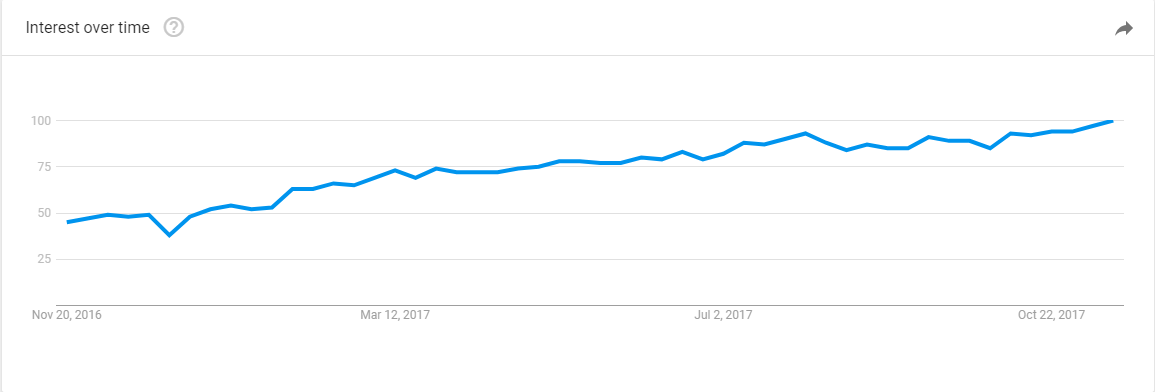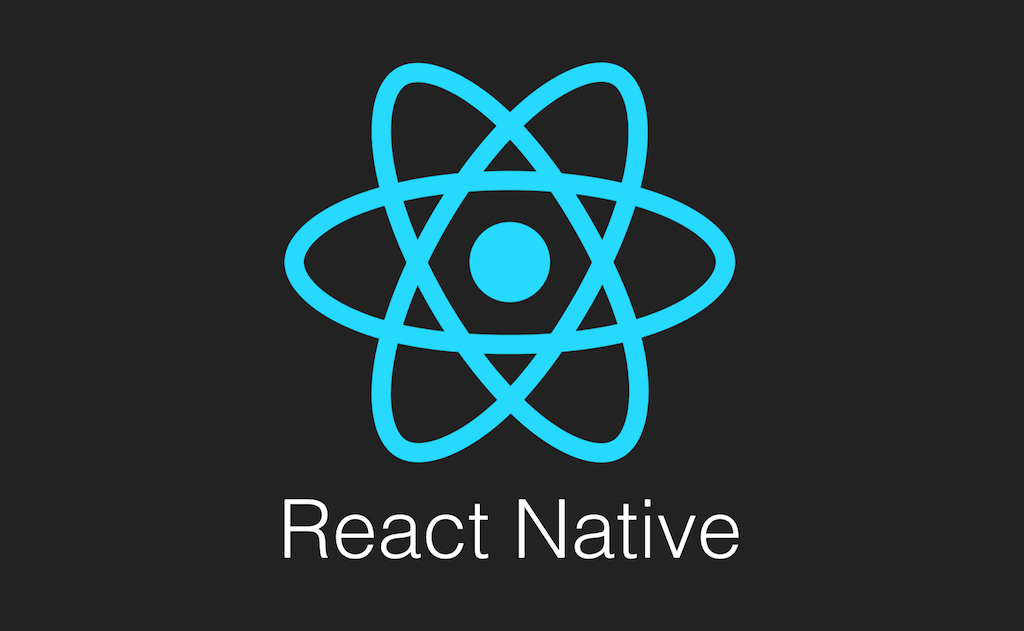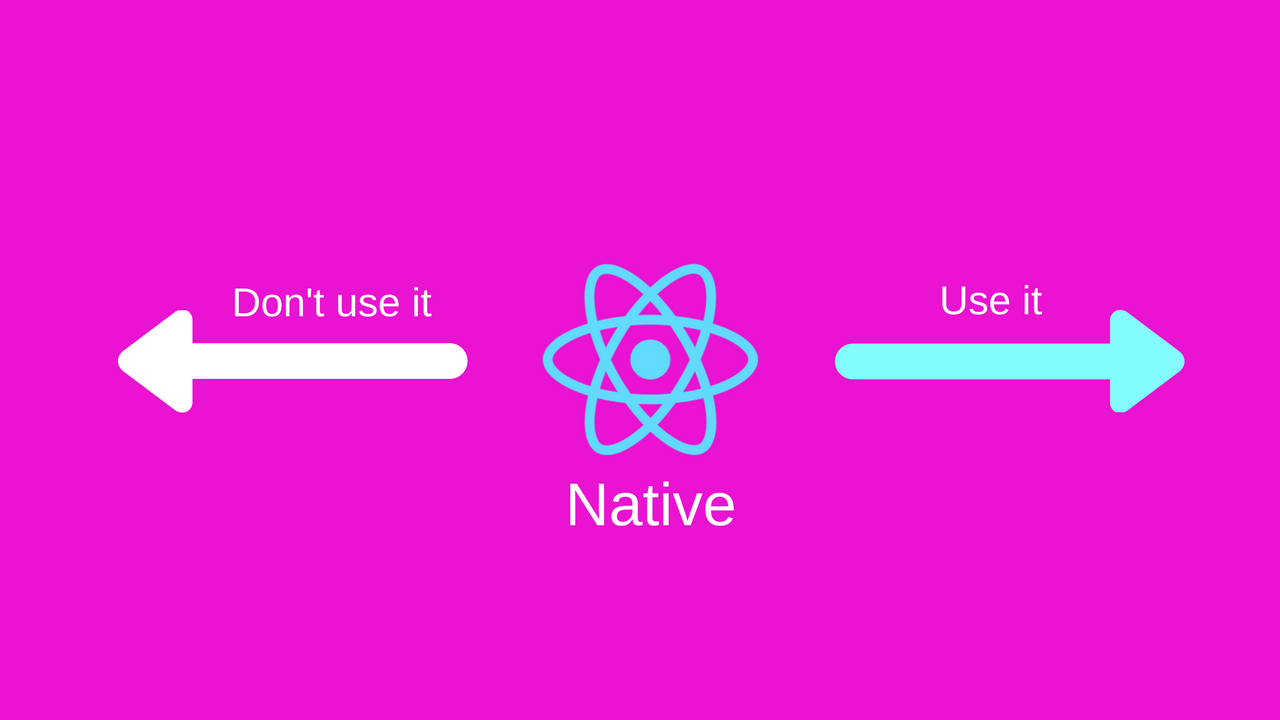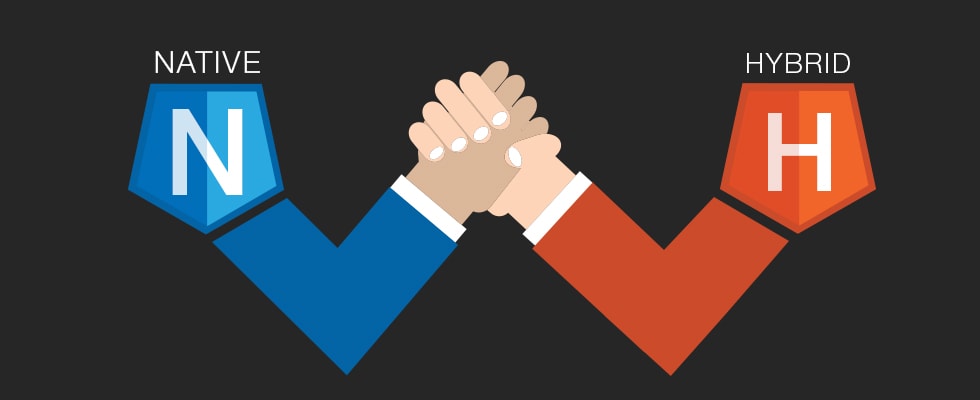In this competitive world of Mobile Application Development, organizations often prefer for an app development that is tagged along with a short development time, quick deployment time, smooth app performance and obviously lesser bugs. And why not!
With platforms like Android and iOS dominating the market, there is only one thing that makes the mobile apps companies face a compromise and that is, an app with better User Interface (UI), faster development and are able to run on both the platforms. Hybrid app framework helps in bridging up this gap between Native app performance and the ease of web app development!

However, as per the recent updates on Google Trends, the React Native platform is gaining a hype and will continue to so in the upcoming years. Hence, it is adopted by a number of Mobile App Developers. Although there are enormous reasons for why this platform is gaining a hit day-by-day, let’s first understand more about its nature…
Jump to Section
What Is React Native?

React Native is a JavaScript library helpful in creating UIs as depicted by its developers. It fundamentally concentrates on the view portion of your application. It implies that when you compose a react native application, your view code contains composing react components which are only little bits of your code that depict the segment of your application looks like in view of the arrangement of input data.
React Native is a mobile platform which gives you a chance to construct versatile applications utilizing just JavaScript. With React Native, you don’t develop a “mobile web application”, an “HTML5 application”, or a “hybrid application”. You only develop a genuine mobile app that is undefined from an application assembled utilizing Objective-C or Java.
React Native uses a similar principal UI building obstructs as consistent iOS and Android applications. You simply set up those building squares together utilizing JavaScript.
Choose React Native – But Why?

After a good and deep understanding of React Native, it is equally important to know about its worth. This platform although provides you with multiple reasons to hold on to it, however, the major ones are listed below:
Hot Reloading Capacity:
This has driven the charge to React Native winding up very well known on the grounds that you are presently ready to change the application code without having to recompile the entire application. This capacity is conceivable in light of the fact that, amid advancement, the code will be stacked from the servers and bundled into the application with different resources. This ability has prompted the ascent of many React Native advancement companies.
Ease Of UI Improvement:
In React Native, the format is actualized with CSS-like templates that enable you to indicate the parts edges, outskirts, tallness, and width, and in addition text styles and hues. The best thing about this is utilizing the flexbox, the parts can indicate the layout of the youngsters and you don’t need to worry about browser compatibility.
Immediate Deployment:
The React Native framework utilizes AppHub and CodePush to push momentary updates to the clients’ gadgets. The circumstance of Android and iOS could not hope to compare to this on the grounds that, in the wake of settling a bug update, it will take 24 hrs and 3 to 4 days separately to reach the clients’ gadgets.
Why Is React Native The Future Of Hybrid App Development?

React Native can definitely be regarded as the bright future of Hybrid App Development. Still have doubts? Go through the below-stated facts to widen the reach of knowledge:
- As it gives a progression of advantages to the developers including speedier development, code reusability, and faster loading times, this pattern will keep on growing at an exponential rate in 2018.
- The interest for hybrid applications is certainly expanding when contrasted with native applications, as organizations lean toward applications which are less complex and perfect with different platforms.
- The hybrid applications likewise enable them to build up the item in a brief span and can achieve the market before their rivals. This aggressive edge has influenced a few major organizations to effectively respond local for building up their applications.
After a knowledgeable interaction with the above-listed points, I am sure that now you will be more convinced towards this approach. In case, you are still struggling with any kind of issues, refer to the more expanded knowledgeable pointers listed below:
Reusable Native Components
Re-usability is one of the real points of interest of React Native as it enables its fellow developers to re-use the once composed code. Any React Native development organization that embraced this structure earlier considered this factor since it can spare much time and exertion similarly.
Truth be told, now organizations can stop selecting diverse groups of developers to deal with the same application for various platforms yet enlist React Native designers to complete the activity in restricted time. Additionally, one can fortify their current application codes by including react native components into their application codes.
Extraordinary Third Party App Compatibility
React Native permit outsider application incorporation, consequently, their functionalities will get profited by the gadget. Also remember, the coordinated APIs don’t force any heap onto the gadget, in this manner guarantee a smooth, proficient execution.
You will get greater lucidity as we move over this illustration. Consider a circumstance when you add Google outline to your application. React Native gives you a chance to interface it with a local module, at last, you can tie-up the guide with your gadget’s capacities, for example, Zoom, turn or more.
Write Everywhere By Learning Once
‘Write once, run everywhere’ is a well-known expression in the cross-platform application development world. Be that as it may, it has more negative than positive implications as it is connected with shoddy execution crosswise over both platforms. With React Native, then again, Facebook obviously recognizes the contrasts between the two platforms, and intends to do things another way and all the more proficiently, and calls the procedure ‘learn once, compose all over the place’.
React Native works by installing JavaScript documents in the application and running them locally. Since it utilizes the tremendous and right now mainstream library of React, which has seen awesome accomplishment on the web, there is a prospering environment of parts accessible to designers who can incorporate any new element as a straightforward module, without manipulating the whole code.
Incredible Developer Environment
Coding is no simple activity and anything that makes developer’s lives less demanding is an out and out victor. React Native has an incredible advancement condition and prompts a positive designer encounter. What would I be able to state, cheerful developers, are much more profitable and React Native helps in keeping the developers happy.
React Native can roll out and actualize improvements in the application while it’s running, killing the need to restart. Here’s a superb demo of that you can appreciate. React Native uses flexbox for making application formats, enabling you to utilize a similar design for iOS, Android, and the web, wiping out the need to learn platform particular designs. Additionally, you can use the Chrome developer tools to join your React Native to your desktop chrome program and increase simple access to its debugger and profiling instruments.
Another incredible usefulness React Native offers is that you can without much of a stretch join React Native components to any current application, independent of the current application code. So on the off chance that you wish to energize a specific element of a current application or include a usefulness, you can basically utilize one of the segments from the React Native library as a module, without modifying whatever remains of the application.
Immediate Live Updates
The Apple application store is notorious for its audit procedure and endorsement times. Having experienced it once to get your application propelled, designers have a low edge of tolerance to do everything over again every time they wish to refresh the application.
React Native has an answer for that as well. Since it essentially utilizes JavaScript, React Native enables you to discharge updates specifically, without going through the application store. With React Native, the procedure is more straightforward and more streamlined since the application is as of now based on a similar system.
Mobile UI: The Key Aspect
The sole concentration of React Native is none yet constructing a mobile UI. As you contrast React Native and other JavaScript systems like Angular JS or Meteor JS, you will understand that React Native is more UI-centered, since it creates more like an impression of a JavaScript library than a structure.
This, in turn, makes the UI more responsive, enables the procedures to keep running effortlessly all because of the coordination of local condition and the system.
Concluding Words

Respond Native is prevalently utilized for hybrid application development because of its number of advantages. Indeed, even fortune organizations likewise utilize react native applications for their organizations to give their end-clients superb experience for utilizing their application.
Reusability of code, highly versatile, centered UI, similarity for third party application coordination and additionally improve the effectiveness of developers has made react native well known for Hybrid application advancement.
- LinkedIn Scraper | LinkedIn Data Extractor Software Tool - February 22, 2021
- Is Web Scraping Legal? - February 15, 2021
- What Is Data Scraping? - February 10, 2021


Really help me allot in my work .well structured and looks like what i need to know i found it here gr8 work!!
Thanx a ton Yatash. Really means a lot. Stay tuned for more such informative updates. 🙂
Points mentioned are quite informative. Keep up the good work!
Thanks Vinay. 🙂